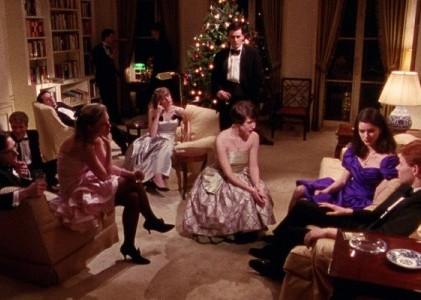Not So Long Ago
The three films that Whit Stillman made in the 1990s are neither the paradigmatic indie comedies they would appear in summary nor the traditionalist allegories his conservative fans have claimed. Though Stillman released these formally unambitious, talky, ironic comedies of romance and manners in a decade lousy with them, they were unusual at the time of their release and have only come to seem stranger with time. The first, most glaring difference between Stillman and his contemporaries lies in the kind of people and places he portrays. While all three films concern groups of wealthy, young, white people—a demographic explored with encyclopedic breadth and microscopic detail in the '90s wave of independent narratives—Stillman's protagonists are too wealthy, too white, and too resolutely unsubcultural to fit in with the bohemians and quasi-bohemians that populated most of the decade's low- and mid-budget films. His characters come from classes of people who have appeared in American films almost exclusively as stock villains for decades: East Side old money preppies in Metropolitan (1990); chauvinistic Americans abroad, a salesman and a naval officer, in Barcelona (1994); and New York disco's straightest, squarest, least fabulous habitués in The Last Days of Disco (1998). Stillman travesties these characters with a sharp, familiar eye, but the parody is gentle, one component of an affectionate portrait. But while his benign comedy does not excoriate them, neither does it extol their virtue, as some of his fans on the Right would have it.
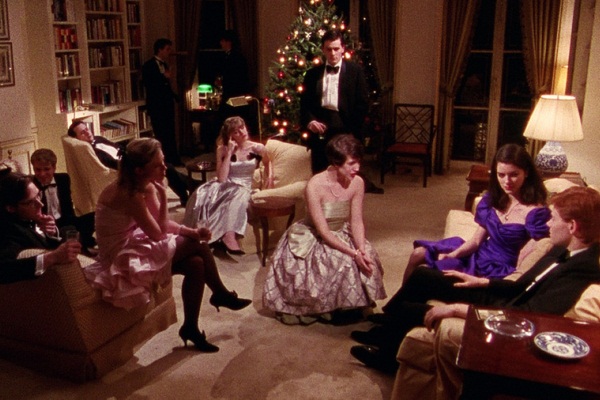
Metropolitan
After The Last Days of Disco, he packed up for Paris and did not make another film for 14 years. As a cult solidified around his work, he gave frequent interviews and occasionally announced new projects. Each one was more improbable than the last: first there was a screenplay set in early 1960s Jamaica, and then one in colonial America; he was to adapt Anchee Min's memoir of the Chinese Cultural Revolution, and then Christopher Buckley's Little Green Men. It seemed he was trying to escape himself, to shed the subjects and strategies that had defined him and made his imprint instantly recognizable. When he finally resurfaced at last year's Venice Film Festival, it came as a surprise that his new film, Damsels in Distress (opening April 6), was not obviously dissimilar in focus from the '90s work. On the eve of that film's release, it is worth taking a closer look back at that work to better understand the nature of his achievement.
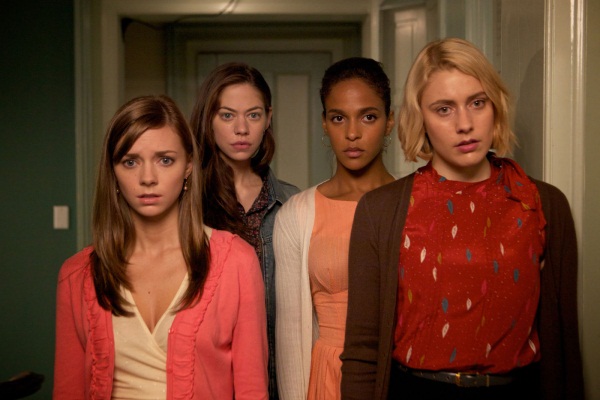
Damsels in Distress
Stillman's unique preoccupations were evident from the beginning. When Metropolitan debuted at Sundance, it was very well-received, but treated more like a sociological curio than a work of art, making Stillman a feature-writers' darling if not always a critics'. The film takes place during Christmas vacation, unfolding over a series of debutante ball after-parties held at the lavish East Side apartments of its protagonists' parents. Our conduit to this world is Tom Townsend (Edward Clements), a Princeton freshman and Pomfret graduate, who, despite his pedigree, is not a deb circuit regular. His parents' divorce has exiled him to his mother's cramped West Side apartment, and he doesn't even own a tux. Besides, he is ideologically opposed to the whole decadent ritual. He has declared himself a follower of Charles Fourier, the French agrarian socialist whose utopian visions are difficult to scale to the world in which Tom actually dwells. When we first encounter him, he is being ushered into a cab outside the Plaza by a group of jocular deb scene regulars, who insist he share their taxi and join them for the after-party. With that, he becomes a member of the Sally Fowler Rat Pack, the intimate gang that gathers nightly at the apartment of their eponymous member.
Despite his principles—as small a hurdle for him as they are for most of Stillman's characters—he returns night after night. He is goaded by the girls to make up for "a serious escort shortage," a ruse to cover for the romantic interest of the modest Audrey Rouget (Carolyn Farina). Tom is also drawn in by Nick Smith (Chris Eigeman), the group's charming curmudgeon, whose acerbic, snippy manner belies the genuine kindness he extends to this outsider, which earns him Tom's affection and ours. Seduced by the easy, convivial sociability of this world, Tom finds himself at home in the unearned sophistication of its banter. He is a perfect foil for Charlie Black (Taylor Nichols), the group's more conservative, self-styled sociologist and ethicist, who early on frets that he and the others are "doomed" to fail the expectations of their class, which he calls neither "WASP" nor "preppy" but his "more sociologically precise" neologism: "urban haute bourgeoisie, or UHB".
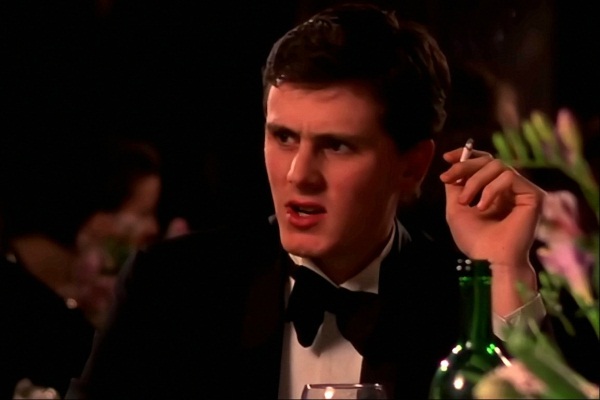
Chris Eigeman in Metropolitan
Stillman has plied these self-serious young people with a precocious verbal agility that animates their adolescent pretensions, and their firmly held, dimly understood convictions. Tom does not read novels, but prefers "good literary criticism. That way you get both the novelist's ideas as well as the critic's thinking." When Charlie meets an older preppie who rejects his forecast of doom, he is unmoved, saying that his less grandiose viewpoint "doesn't ring true." Nick Smith invents a story about a rival and defends it as "a composite, like New York magazine does." These foibles only make them sweeter. Stillman captures both the innocence and the refinement of his inexperienced mock sophisticates without slipping into the mannered showiness that mars the work of his most obvious heirs, Wes Anderson and Noah Baumbach, who bask too long in the quirks of their creations. This achievement belongs also to Metropolitan's talented cast of first-timers, who all inhabit their roles with a serene self-assurance that grounds the film's conceits in more recognizable ways of being.
From the opening title, "Not so long ago..." and the idyllic shots of Christmas-time Manhattan that follow, it is clear that we are in something of a fairytale world. The film is set, partly for budgetary reasons, in what Stillman has called "light period," drawing from his memories of the deb scene in the '60s and '70s, and mixing them with images and references that traverse the '60s, '70s, and '80s, all while evoking a social world that most viewers will associate with the '50s at the latest. The images are beautiful in a low-key, haphazard sort of way. Stillman's blocking in the group scenes is sometimes awkward, and the compositions are usually no more than functional, but cinematographer John Thomas, who went on to shoot Stillman's next two films, keeps the camera close enough to the actors to capture the small looks and reactions that bring the groups' complex dynamics to life without overplaying their significance. Thomas's boxy style detracts somewhat from Barcelona and The Last Days of Disco, but its small-screen intimacy works perfectly within the low-budget constraints here. He has a wonderful sense of natural or minimally manufactured light, evoking both the bright, chilly melancholy of New York winter days, and the bracing enchantment of its evenings in a few quick strokes. The baronial interiors look even better, Thomas sketching their sturdy opulence in the grainy texture of Super 16mm. These cozy touches wrap the characters in a warm, nostalgic glow that softens some of the dialogue's barbed implications.
Stillman is more often praised for his writing than his directing, but the intricate syntax of his dialogue could have easily overwhelmed his inexperienced cast had he not taken such obvious care with their performances. He worked closely with editor Christopher Tellefsen to cut down the footage he shot from his lengthy script, paring it to the essentials, allowing its natural dynamics to emerge. Tellefsen knows when to cut and when to linger, which jokes to underline, and which to let drift unobstructed in the flow of conversation, shaping the film to the rhythm of experience rather than the demands of narrative. Though Stillman's other films have their own flashes of formal ingenuity, he and his crew become bogged down in those stories' more intricate plotting, and he has never quite matched Metropolitan's measured elegance of gesture.
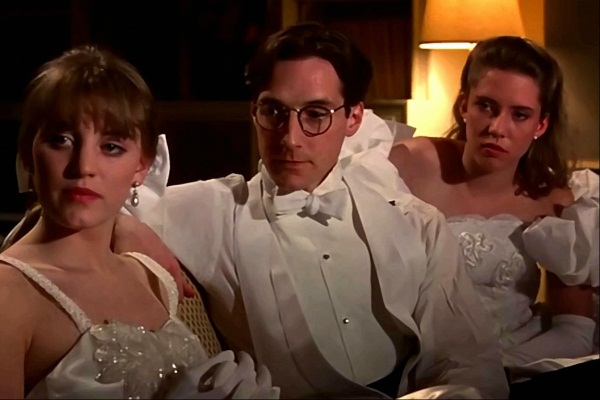
Taylor Nichols in Metropolitan
As the lived-in specificity of the script's observations suggest, Stillman was mining autobiographical terrain. A true East Coast blue blood, he grew up in the rarefied preppy enclave of Cornwall-on-Hudson, New York before moving to Washington, D.C., where his father, John Sterling Stillman, served in the Commerce Department of the Kennedy Administration. But he is more Tom Townsend and less Charlie Black than most of his commentators have imagined. Stillman too had faced low-stakes social demotion after his parents' divorce, and likewise experienced the debutante parties as an outsider. His scenario for Metropolitan was based specifically on his experiences tagging along to the balls during the Christmas break from his desultory freshman year at Harvard, initially skeptical of the world he had entered, attending the parties with an SDS pin in his lapel, a group whose Harvard-Radcliffe chapter his brother had co-founded.
By the time Metropolitan appeared at Sundance, Stillman was already 37, fairly old for a first-time director, especially in an era so enamored with enfants terribles. Though he had long held an interest in film and television, he already had a few careers under his belt before pursuing it. After moving to Spain, his wife's native land, he talked his way into the country's modest film industry, becoming the American sales agent for the light comedies then flourishing in Madrid. It was his experience helping Fernando Colomo shoot La linea de cielo (1984) in New York on a tiny budget that convinced him he could make his own films. His first attempt at screenwriting yielded an early draft of what would become his second film, Barcelona.
Set in the titular city during "the last decade of the Cold War," Barcelona reunites the two most promising stars of Metropolitan, Chris Eigeman and Taylor Nichols. On a dreary evening, Fred Boynton (Eigeman) turns up, unannounced and unwelcome, at the doorstep of his cousin Ted (Nichols). A young (and unlikely) naval officer, Fred is there as "a sort of advance-man for the Sixth Fleet," tasked with taking the temperature of the anti-American, anti-imperialist sentiment that prevailed in the city during the era. The earnest, comically straitlaced Ted, director of the Spanish sales office of a Chicago-based automotive company, is in the midst of a mini life crisis after the collapse of his most recent relationship. He turns to the Bible for romantic advice, but his real religion is sales, whose promise of efficient problem solving he believes deeply. He is, in other words, a parodic archetype of a corny, self-improving, and entrepreneurial Americanness. Fred catches him alone one right reading the Bible to himself as he dances along with "Pennsylvania 6-5000." Where Ted is friendly and solicitous, Fred is prickly and self-righteous. He squabbles with the locals, boasting the superiority of American culture and his own tastes, and refusing to humor any of his companions. His unpleasantness does not prevent the cousins from falling in with a group of pretty Barcelonian women who work at the trade fairs, setting into motion the film's romantic comedy of errors.
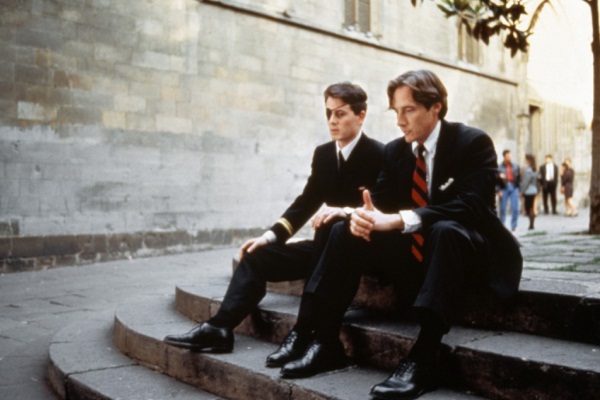
Chris Eigeman and Taylor Nichols in Barcelona
Barcelona is structured by Ted's first-person narration—often accompanied by wordless flashbacks with clunky pantomiming that illustrates just how essential dialogue is to Stillman's direction of performers—which situates him as the most unambiguous protagonist in Stillman's body of work. Eigeman's raffish self-assurance once again puts his secondary character in competition for our attention, but Fred Boynton's boorish ill-temper is mitigated by none of the kindness displayed by Nick Smith in Metropolitan. Nichols's Ted, though much more conventionally likeable, and despite his privileged relation to the viewer, is no obvious match for our sympathies either. Though polite and unfailingly sincere, his friendliness seems hard-earned, suggesting a resentful, disapproving smallness of spirit. And though he makes a show of appreciating the culture in which he and Fred are visitors, he is ultimately as incurious and parochial as his cousin. At one point he describes the Paseo de Gracia as "the Michigan Avenue of Barcelona."
Both Eigeman's and Nichols's characters resemble the ones they played in Metropolitan. Between them, we can see Stillman carving out two characteristic types of his late 20th-century upper-class American milieu. Aware of their typicality, characters in all three of Stillman's films quibble with the terminology that has come to define them: Charlie attempts to spread his "UHB" coinage in Metropolitan; Fred rants about the Spanish word for "American" in Barcelona: "‘Estadounidense.' Dense. D-E-N-S-E. It's the same spelling—dense, thick, stupid. Every time you hear it, Estadouni-dense, dense, dense. It's like a direct slap in the face."; and, in The Last Days of Disco, Des McGrath, a sleazy club manager played by Eigeman with the usual mannerisms intact, protests: "Do yuppies even exist? No one says, ‘I am a yuppie.' It's always the other guy who's a yuppie. I think for a group to exist, somebody has to admit to be part of it." The protagonists' dreadful recognition of their own predictability also informs the fatalism that plagues all of them. Ted's persistent worry that he has chosen romantic and professional roles for which he is not ultimately cut out, and Fred's derision for Ted's hopeless self-help routines echo Charlie's sense of doom for the UHB class in Metropolitan. Des articulates this fear most directly in The Last Days of Disco. Fleeing potential prosecution in a cab to JFK at the film's climax, Des wonders aloud:
You know that Shakespearean admonition, "To thine own self be true"? It's premised on the idea that "thine own self" is something pretty good, being true to which is commendable. But what if "thine own self" is not so good? What if it's pretty bad? Would it be better, in that case, not to be true to thine own self? See, that's my situation.
Earlier in the film, before he has fulfilled his pathetic destiny, Des meekly protests such inflexible notions of the self during the film's well-known Lady and the Tramp riff, in which Josh (Matt Keeslar)—the upright Assistant District Attorney who is competing with Des for the affection of Alice (Chloë Sevigny)—complains that the Disney film and ones like it "program young women to adore jerks." Des sees what Josh is angling for, and tries to refute him, suggesting: "Isn't the whole point that Tramp changes?" Josh responds, "I don't think people really change that way. We can change our context, but we can't change ourselves," seeming to underline the position of the film, which concludes with the characters matched to their temperamental equals. But there is much in The Last Days of Disco and Stillman's other films that gives real weight to the possibility of self-transformation, even if only made possible by a change of context. In those concluding moments of Last Days of Disco, Des becomes immensely more appealing when no longer paired with the much better-natured Alice. The third acts of Barcelona and Metropolitan both turn on the revision of their characters' elaborate misapprehensions of one another.
Stillman is a master of ironic characterization. If his characters describe themselves one way, it is a safe bet that they will soon reveal themselves to be another. This principle extends to the films themselves, all founded on their own individual ironies: Metropolitan is a cheaply made film about very rich people; Barcelona a worldly take on die-hard provincials; and The Last Days of Disco is a stiff, talky portrait of a loose, sensual era. And while they all behave initially like comedies of manners, dealing with the kind of representative social types described above, they proceed as more expansive character studies that take seriously their protagonists' aspirations and travails, absurd as the terms in which they are expressed may be. The films evolve in this direction not by shifting tone, but naturally, through the implications of the comedy itself, a variant of what James Wood has called, following Shakespeare scholar Robert G. Hunter, "the comedy of forgiveness".
In The Irresponsible Self: On Laughter and the Novel, Wood argues that the modern novel is largely premised on this form of comedy, "a kind of tragicomic stoicism" which
can be distinguished—if a little roughly—from the comedy of correction. The latter is a way of laughing at; the former a way of laughing with. Or put it like this: at one extreme of comedy there is Momus, the ancient personification of faultfinding, reprehension, and correction, who appears in Hesiod and Lucian. And at the other extreme of comedy, in the area now called tragicomedy, is the "irresponsible self."
For all their apparent ridiculousness, their pretensions, and their utter lack of self-awareness, Stillman's characters are never reduced to their defects alone. They are not called to account for who they are, as in the comedy of correction, whose roots Wood locates in religion, for its laughs are by necessity premised on the recognition of a discrepancy between how things are and how they ought to be, between eternal truth and its worldly violation. There is no reality in these films besides that of their protagonists, and Stillman never points us toward some external standard for them to fail. The "irresponsible self" to which Wood refers is Henry James's ideal of "irresponsible plasticity" in fictional characters, the unpredictable complexity that makes them more like real human beings than ideas. Stillman's characters are not the layered, capacious inventions we expect from great novels, but their maker provides them, in the very gags that send them up, with richly detailed idiosyncrasies and an evident humaneness that overwhelms their figurative purpose. Their humanity exceeds their shortcomings, and their weaknesses are what make them lovable. When Tom Townsend reveals that despite all his objections to her work, he has never actually read one of Jane Austen's novels, our laughter acknowledges his fraudulence, but the film's obvious belief in his good nature prevents us from reproaching him, instead inviting us to identify with his frailty. "If religious comedy is punishment for those who deserve it," Wood writes, "secular comedy is forgiveness for those who don't."
In Metropolitan, Stillman extends this forgiveness to every member of its ensemble, multiplying the irresponsibility to create a complex organism that seems, despite the author's unmistakable signatures, to propel the story by its own volition. Barcelona, focused more intently on the two individuals at its center, leaves less room to drift from the designs of its maker. The Last Days of Disco returns to the dynamic of Metropolitan, driven by what its character Charlotte identifies as "group social life." Charlotte has just moved to New York in "the very early '80s", as the opening title has it, to work in publishing with fellow Hampshire grad Alice. They spend their days scouring the slush pile for the bestseller that will establish their editorial careers and their evenings at the Studio 54-like club partly managed by Des. They fall into a regular weekend routine with him, his friend Jimmy Steinway (Mackenzie Astin), a rather pitiful advertising man, and Josh, an Assistant District Attorney and a disco adherent more in theory than practice. This being a Stillman film, Charlotte quickly sheds her devotion to the group, giving into the "ferocious pairing-off" she earlier decries as soon as Jimmy Steinway shows an interest in her. Unable to find her romantic ideal, Alice gives up and spends most of the film in an unsatisfying affair with Des. In Stillman's work, the friendships are always even more interesting than romances, and the female protagonists here add new dimensions to his exploration of such affinities.
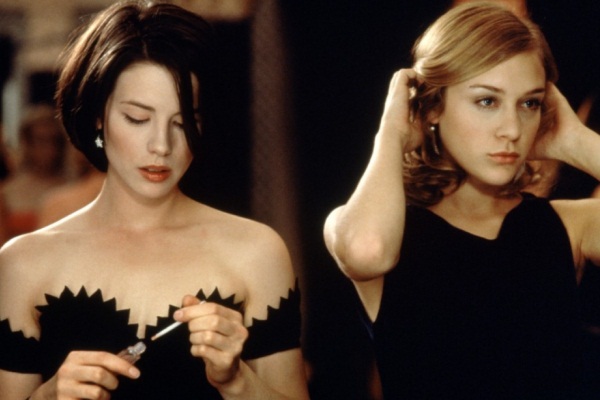
Kate Beckinsale and Chloë Sevigny in The Last Days of Disco
As with the other two films, Stillman drew The Last Days of Disco from life, this time his experiences in the late '70s and early '80s at Studio 54. Engaging in another round of cultural contrarianism, he expected and welcomed skepticism from the annoyingly persistent "disco sucks" crowd. What he failed to anticipate was the ire of disco partisans, who see the era as one of gay liberation and the flourishing of the emergent black middle class. Such critics are closer to disco's cultural meaning—as evidenced by that very panicky persistence of its traditionalist opponents—but the film's title makes it clear that Stillman is once again exploring a very particular experience of a larger moment. For the filmmaker and his yuppie characters, disco was a return to the well-dressed, formalized social rituals of the debutante years (members of the Metropolitan gang make an in-character cameo appearance in the film) after the convulsions of the late '60s and early '70s. As Josh says to Alice: "I loved the idea that there would be all these great places for people to go dancing after the terrible social wasteland of our college years."
Stillman toes a similar line with the film, siding against his own age group in the generational skirmish Josh's remark represents. "You know the Woodstock generation of the 1960s that were so full of themselves and conceited?" Charlotte asks, with typical rhetorical transparency. "None of those people could dance." That conceited Woodstock generation had not, however, vanished without a trace. The Last Days of Disco illustrates the remarkable refashioning of courtship achieved by the sexual revolution in the years between those in which it is set and those depicted in Metropolitan. The sexual revolution is the cloud that hangs over all three films, the dramatic upheaval that informs Stillman's nostalgia. "The sexual revolution reached Spain later than the U.S but went beyond it," Ted whines in Barcelona. "I don't know what it was like in other cities, but in Barcelona, everything was swept aside. The world was turned upside down and stayed that way." Even Metropolitan dramatizes its effects. Taking place over two weeks, its two parts—the first marked by idyllic camaraderie, and the second by lonelier, more atomized relations—representing, Stillman has said, "before 1969 and after."
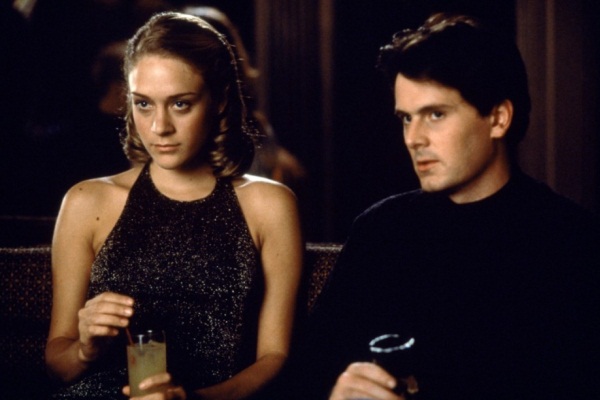
Chloë Sevigny and Chris Eigeman in The Last Days of Disco
Stillman voiced his disdain for '60s culture, and his longing for the past at an auspicious moment. In the years between Metropolitan and Barcelona, Pat Buchanan gave the infamous address to 1992 Republican National Convention in which he declared the culture war that produced the decade's biggest political battles. Stillman's shadow culture war, takes place on very different terms than the Right populist, evangelical ones Buchanan set, and even the superficially more reasonable ones offered by the Republican Party's cynical old guard in more highbrow conservative organs. But contributors to those very publications did not fail to notice Stillman's feeling for tradition, his affection for the bourgeoisie, and his apparent dismay at the loosening of social mores. The National Review, City Journal, and The Intercollegiate Review have all published glowing praise of his films—the latter even devoting a special issue to him that was expanded into what unfortunately remains the only book-length study of his work—and championing him as that rare specimen: the respectable conservative artist.
In interviews, Stillman has tried to keep his political convictions somewhat mysterious. In a New York Times profile published in the run-up to Last Days of Disco, Charles Scribner III shares a remembrance of Stillman from the freshman year deb season. Stillman, wearing his SDS button, warned Scribner of the impending class war, arguing with him until the publishing magnate concluded: "Look, whoever you are, it seems to me you have got to change your politics or your social life." Stillman chose the former, retiring his radicalism before graduating Harvard, and eventually even rejecting the postwar consensus liberalism represented by his father. In the '80s, he served as the New York editor of The American Spectator, writing humor columns and film criticism in the name of the Reagan Revolution. But since he started making films, he has scrupulously avoided talking politics altogether—though he has given hints of more liberal leanings, disavowing some of the Cold War-era resentment of Barcelona and approvingly citing Charles O'Brien's liberal take on his work in First of the Month.

Whit Stillman on the set of his film Damsels in Distress
However Stillman's own politics have evolved, the conservatism of these films is not a difficult case to make. There is not only the wistful longing for regressive social norms, and the celebration of the upper class, but in Barcelona, the only one to venture beyond cultural politics, a minimizing of any objection to American hegemony, and Stillman seems to endorse its main character's exaltation of the beneficent effects of global capitalism. All three even present us with a different leftist doofus, whose goals are shown to be either hopeless or actively destructive: Tom Townsend in Metropolitan, whose rather abstract socialism has no bearing on his day-to-day experience; Departmental Dan in Last Days of Disco, an old school progressive who is no less superficial in his romantic dealings than the film's more pragmatic men, who are at least honest in their amorality; and, most insidious of all, Barcelona's Ramon, who erroneously names Fred as a C.I.A. agent in print, leading to an assassination attempt that puts him in a coma. Despite this arsenal of evidence, all of Stillman's conservative champions fail to paint a compelling portrait of him as the indie film world's Burkean sentry. One does not have to read very far into these pieces to spot the special pleading that characterizes all of them, or their deafness to tone and context that would, were it not deployed so cynically, verge on the autistic. These authors approvingly cite scenes, like Fred Boynton's defacement of anti-yanqui graffiti in Barcelona or Tom's denouncement of Alice in Last Days of Disco, that are clearly intended to reflect poorly on their participants, as though they represented the filmmaker's perspective. Wanting to believe they have found an ally, they miss that what Stillman objects to in the post-'60s social order is not its licentiousness, but its inwardness: the competitive, vainglorious cultivation of self that forecloses the welcoming, broad-minded sociability he remembers of the epochs he re-creates.
That no one has published a rigorous, convincing conservative reading of Stillman is, in part, another indication of the poverty of what passes for cultural criticism on the American Right, but it is also the result of Stillman's generous sympathies, the unyielding, nearly universal affection he extends to the people of his dramatic world: the comedy that forgives everything that his priggish fans on the Right show him to condemn after they have reduced his indulgent, humane stories to morality plays. They get him exactly wrong: Stillman is not our most censorious narrative filmmaker, but our most promiscuous. ![]()
LATEST ARTICLES
-20140814-173707-thumb3.jpg)
Fighting Words
by Imogen Sara Smith
posted August 12, 2014

Fighting Words, Part 2
by Imogen Sara Smith
posted August 20, 2014

On the Margins: The Fil…
by Andrew Chan
posted August 12, 2014

Robin Williams: A Sense…
by David Schwartz
posted August 12, 2014
 Not So Long Ago
Not So Long Ago
KEYWORDS
Whit Stillman | independent cinema | Retrospective | comedy | social classes | New York | Chris EigemanTHE AUTHOR
Colin Beckett is the Critical Writing Fellow at UnionDocs in Brooklyn. His writing has appeared in Cineaste, The Brooklyn Rail, BOMBlog, and Idiom.
More articles by Colin Beckett
